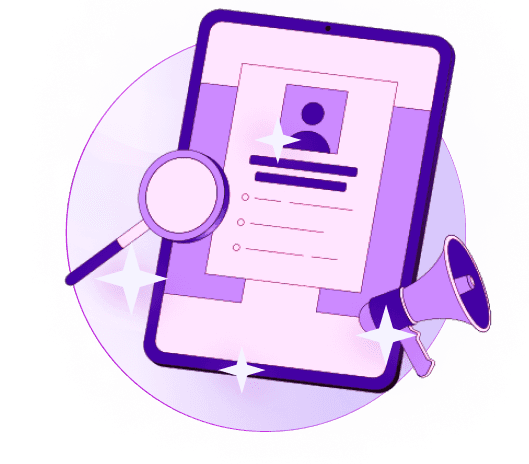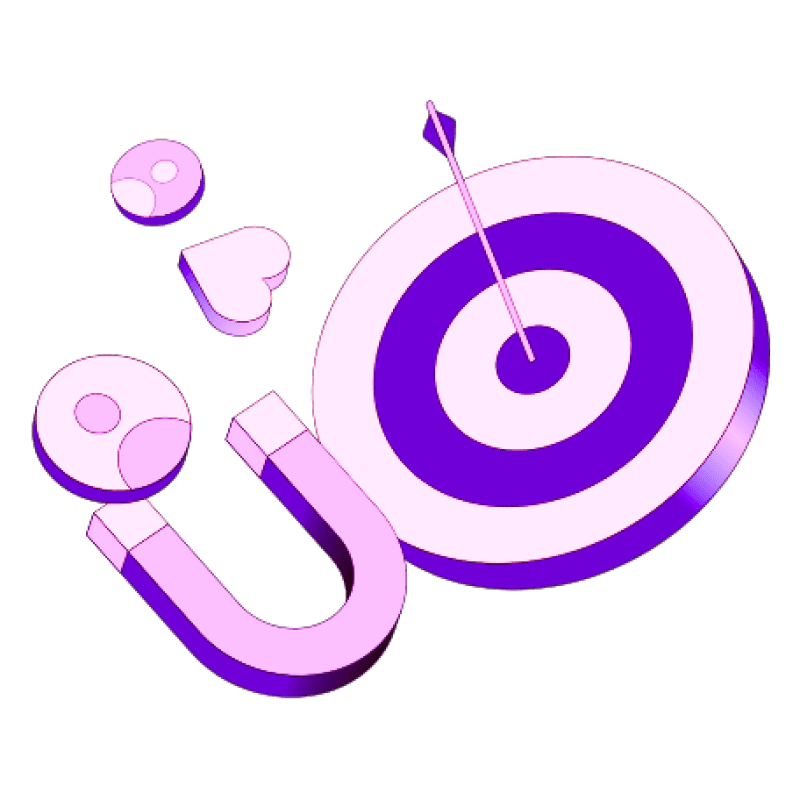Blogs
Articles

Pros and Cons of AI Lead Generation: What You Need to Know
Businesses that respond to leads within an hour are 7 times more likely to qualify them than those who wait just one more hour. Harvard Business Review shows that waiting 24 hours or more drops your chances of qualifying leads by over 98%. This makes the pros and cons of AI lead generation crucial for modern businesses.
This piece will help you understand what artificial intelligence lead generation means for your business. You'll learn the main benefits and drawbacks of using AI to generate leads. We'll also give you practical tips to implement these powerful tools and avoid common mistakes.
What is AI lead generation?
AI lead generation uses artificial intelligence technologies to find, attract, qualify, and nurture potential customers better. AI lead generation makes use of machine learning algorithms, natural language processing (NLP), and predictive analytics. These tools analyze big amounts of data to predict customer behavior and automate tailored outreach. Sales and marketing teams can now focus on involving high-value prospects instead of doing repetitive tasks.
How AI fits into the sales funnel?
AI performs many vital functions throughout the sales funnel. Smart chatbots talk to website visitors 24/7 and capture leads even when the office is closed. AI boosts lead identification by analyzing customer behaviors and gives deeper insights into the prospect's trip.
The middle stages become smoother with AI-powered lead qualification. Automated scoring systems analyze engagement metrics and spot high-intent prospects. On top of that, it optimizes workflow by prioritizing promising opportunities. Some businesses report a 30% improvement in pipeline accuracy.
AI vs traditional lead generation methods
We used cold calling, mass emails, trade shows, and manual data collection in traditional lead generation. These methods need lots of work and don't scale well. AI-driven lead generation shows clear advantages in several areas:
AI makes everything faster. Traditional methods take weeks or months to show results. AI-powered systems cut lead qualification time by up to 80%.
Personalization is where AI really shines. Instead of generic messages to broad audiences, AI studies individual behaviors to deliver custom content. Companies using AI for personalization see a 10-20% boost in sales.
AI never sleeps. Unlike humans, AI tools work round the clock. Some businesses see a 50% jump in after-hours lead generation through AI-based chatbots.
These benefits explain why B2B firms with mature, AI-improved sales processes generate 133% more revenue than those using traditional methods.
The Pros of Using AI for Lead Generation
Numbers tell the real story about AI lead generation's advantages. Let's get into the specific benefits that make this technology worth thinking about for your business.
Faster response times and 24/7 engagement
Lead conversion faces a tough enemy - time. Research shows that companies who respond within 5 minutes are 21 times more likely to qualify leads than those who wait 30 minutes. AI tools help businesses slash response times from hours to seconds. A Midwest roofing company's callback time dropped from 4 hours to 90 seconds, which boosted their booked jobs by 41%.
Your AI system stays active while you sleep. AI-powered systems talk to leads day and night, so after-hours lead capture increases and engagement stays strong across time zones.
Improved lead scoring and qualification
Data-driven analysis from AI scoring removes human bias and errors. AI spots patterns and relationships in huge datasets that would overwhelm manual processing. To cite an instance, AI automatically tweaks scoring when it sees pricing page visits relate to higher conversion rates.
Gartner's research shows AI lead-scoring models cut lead qualification time by up to 30%.
Scalability without increasing headcount
AI's biggest strength lies in handling volume without matching cost increases. Quality stays consistent whether your AI processes 1,000 or 100,000 leads. AI-driven sales agents handle 10 times more leads than human SDRs.
Personalized outreach at scale
AI creates targeted messages by analyzing purchase history, browsing behavior, demographics, and social media activity. This tailored approach boosts customer experience and drives up engagement rates.
Lower cost per lead over time
AI lead generation saves money long-term despite original setup costs. Teams using AI report 30-40% lower customer acquisition costs compared to manual-only methods. A human SDR costs $5,000-$7,000 monthly, while some AI SDR solutions start at $500 per month.
The Cons and Limitations of AI Lead Generation
AI lead generation has impressive capabilities, but businesses should know its limitations before they start using these systems. Let's get into the other side of this evolving technology.
Lack of human touch in complex sales
AI streamlines processes but can't copy human empathy or create emotional connections that build customer loyalty. Complex sales take the biggest hit from too much automation. AI fails to pick up subtle cues or add emotional context to client concerns. Today's customers want to be seen as real people, especially during uncertain times and rapid industry changes.
Dependence on data quality
AI tools are only as good as their data. Stanford AI professor Andrew Ng puts it well: "If 80 percent of our work is data preparation, then ensuring data quality is the most critical task for a machine learning team". Bad data can lead to:
Unreliable or biased results
Wasted outreach efforts
Missed opportunities due to wrong assumptions
Companies with poor data readiness lose $12.9 million on average each year.
Risk of over-automation
Over-automation stands out as one of the biggest prospecting mistakes. Teams often ignore vital sales channels like cold calling because they focus too much on what they can automate. On top of that, automating junior-level tasks can hurt the skill development needed for future leaders.
Initial setup and integration costs
Upfront costs can add up fast, from software licenses to integration work and training. AI projects might not pay off right away since teams need time to learn the ropes. Companies should start small with high-impact, simple projects to show quick wins that justify more budget.
Ethical and compliance concerns
AI lead generation brings up vital questions about privacy, bias, and compliance. Up to 87% of AI projects never reach production, mostly because of poor data quality. Companies need their AI systems to follow rules about copyright, data security, and privacy. They might also face discrimination claims when they let AI make important choices.
How to Use AI for Lead Generation Effectively
Successful AI implementation needs strategic planning and careful execution. Here's how you can get the best results when deploying AI for lead generation:
Start with a clear use case
You need to identify specific pain points in your current lead generation workflow that AI could address. Take a look at where your sales reps spend most of their time and which tasks are repetitive or prone to errors. Your implementation strategy will be more focused when you line up these challenges with specific AI use cases, rather than adopting AI just because it's trendy.
Ensure clean and structured data
Note that AI will only work when it has quality data. Studies show that 85% of AI initiatives fail because of poor data preparation. You should take these steps before implementation:
Conduct a data audit to identify missing or outdated information
Establish standardized data entry processes
Create an integrated, centralized data infrastructure
Bad data quality creates unreliable outputs, wastes resources, and can lead to decisions that get pricey.
Choose the right AI lead generation tools
Pick solutions that line up with your specific goals, whether that's improving lead scoring, personalizing outreach, or scaling participation. Look at factors like reporting capabilities, data security compliance, and integration with your existing CRM and marketing platforms. Tools like Persana.ai provide specialized AI features that can improve your lead generation efforts while blending with your tech stack.
Blend AI with human oversight
AI might be sophisticated, but human expertise remains vital. You should use AI for data-heavy tasks while keeping human involvement for relationship building and complex sales situations. This balanced approach helps you build trust through human touch while AI handles repetitive processes.
Monitor and optimize continuously
The real work begins after implementing AI. Set clear metrics to measure success, such as conversion rates, lead quality, and engagement levels. AI-driven dashboards help track performance and show which channels bring the highest-quality leads. This ongoing optimization helps your AI lead generation system improve steadily over time.
Conclusion
AI lead generation marks a radical alteration in the way businesses connect with potential customers. AI tools can cut down response times, provide 24/7 customer interaction, and expand lead generation without matching cost increases. Companies that use these systems well see remarkable results - from 30% improvements in pipeline accuracy to 40% lower customer acquisition costs.
The successful rollout needs careful planning. AI systems still need that human element for complex sales situations and rely heavily on quality data. You need to think over the risks of too much automation, original setup costs, and ethical implications when making your decision.
The next phase of lead generation lies where human expertise meets AI capabilities. The right mix lets businesses automate routine work while keeping the relationship-building aspects that accelerate customer loyalty.
Companies ready to start this experience can check out specialized solutions at Persana.ai. These solutions streamline lead generation while keeping the personal touch that creates lasting customer relationships.
Key Takeaways
AI lead generation transforms how businesses connect with prospects by automating repetitive tasks while preserving human relationship-building capabilities for optimal results.
• Speed matters critically: Companies responding to leads within 5 minutes are 21x more likely to qualify them than those waiting 30 minutes.
• AI delivers measurable ROI: Businesses report 30-40% lower customer acquisition costs and 30% improvement in pipeline accuracy with AI implementation.
• Data quality determines success: 85% of AI initiatives fail due to poor data preparation - clean, structured data is essential for reliable results.
• Balance automation with human touch: Use AI for data-heavy tasks while maintaining human involvement for complex sales and relationship building.
• Start strategically, scale gradually: Begin with specific pain points, ensure data quality, and continuously monitor performance to optimize your AI lead generation system.

Create Your Free Persana Account Today
Join 5000+ GTM leaders who are using Persana for their outbound needs.
How Persana increases your sales results
One of the most effective ways to ensure sales cycle consistency is by using AI-driven automation. A solution like Persana, and its AI SDR - Nia, helps you streamline significant parts of your sales process, including prospecting, outreach personalization, and follow-up.



